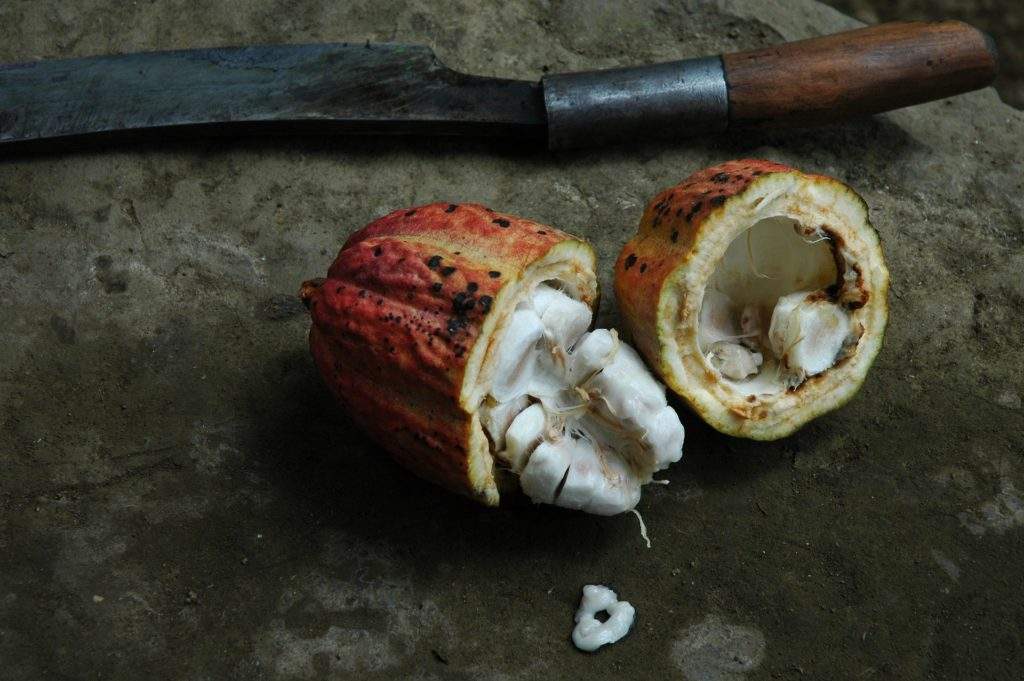
Inside a cocoa pod there is a white pulp called “mucilage“.
The mucilagesurrounds the cocoa beans inside the pods like a protective veil with the texture of pulp.
Although the white pulp is not directly used to make chocolate, it is far from useless: the mucilage is an essential component of the fermentation process, a crucial step in developing the flavor precursors within the cocoa beans.
Technically, it is the mucilage, not the cocoa beans, that ferments and initiates all the chemical reactions that occur during fermentation.
After doing its job, the white pulp is drained off and remains as a residue from cocoa production.
Many professionals thought this was a real pity, as mucilage has a unique, tropical, fresh and fruity taste, like a mixture of fruit juices.
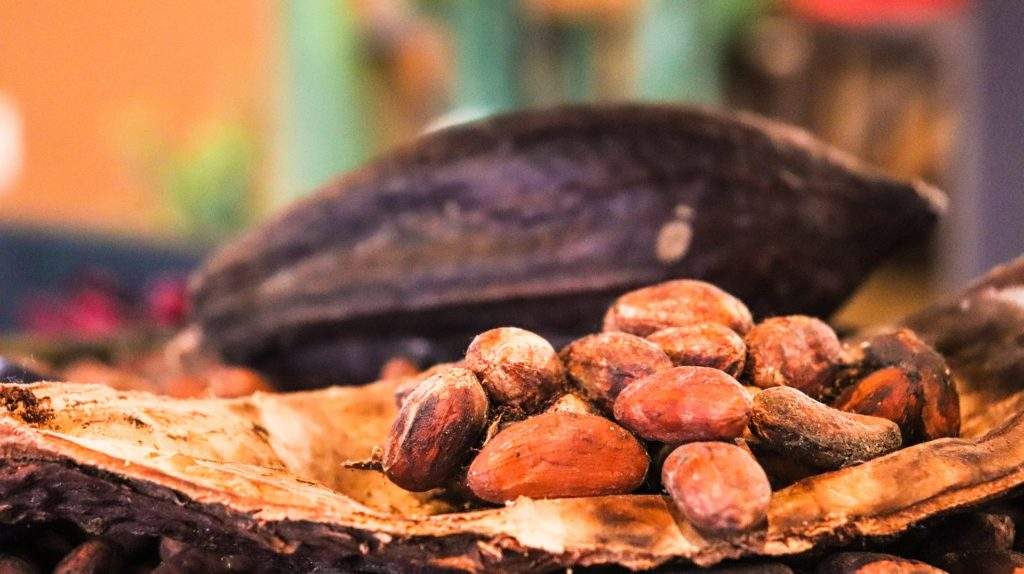
In cocoa-producing countries, mucilage has always been used in cooking for smoothies and sweet drinks because of its unique flavor and ready availability.
In recent years, some companies in Europe and the United States have launched cocoa juices made entirely from this white pulp, without the need for added sugars.
Some artisan chocolatiers, and now also large chocolate brands, are also experimenting with the inclusion of mucilagewithin their chocolate bars as the most natural and healthy sweetener.
It is also interesting to note that the mucilage will have different flavor notes depending on its variety, terroir and origin, as will the cocoa beans.
For example, some white pulps will have a super-fresh taste like pineapple, others will be as sweet as mango, and still others will be tart like passion fruit.
Regardless of the predominant tasting notes, cocoa mucilage has a unique flavor that cannot be found anywhere else.
Cocoa mucilage is a by-product and what was once considered a waste product is now revolutionizing the cocoa kitchen and value chain, bringing new benefits to the communities involved in this activity.
Today, cocoa mucilage is highly appreciated in many culinary applications.
Images of opened cocoa pods now appear triumphantly on the packaging of many chocolate bars.
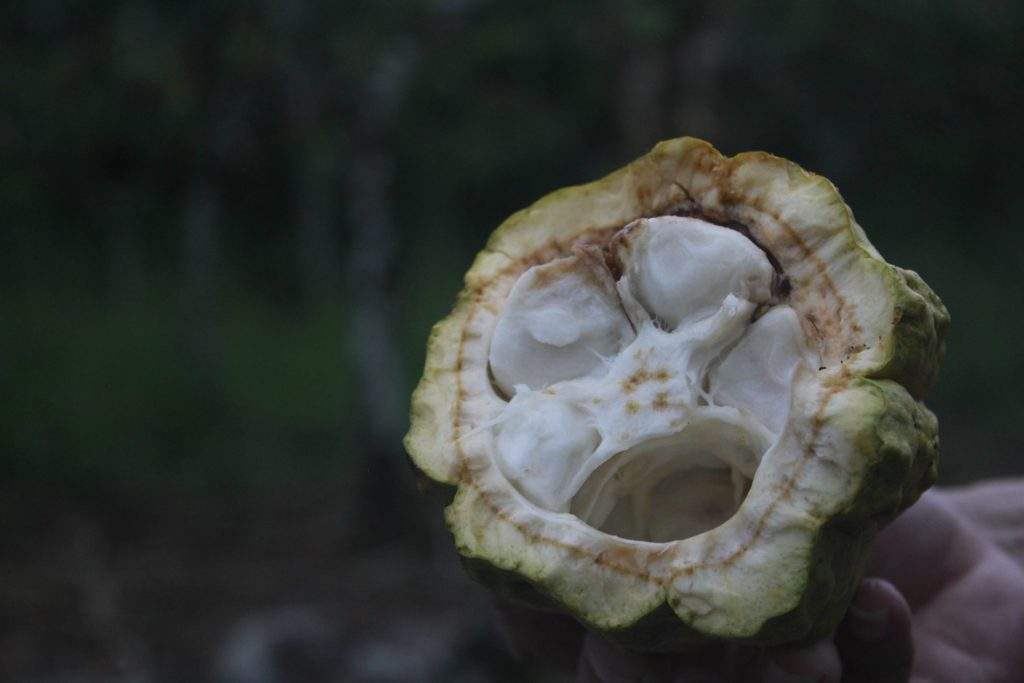
Cocoa mucilage is a white, sticky, fleshy substance that surrounds the cocoa beans inside the pod.
Not only is it completely edible for animals and humans, but it is also endowed with a unique flavor.
Fruity, sweet, spicy and slightly acidic, cocoa mucilage offers the perfect blend of tropical fruit flavors such as mango, pineapple, passion fruit and lychee.
As with cocoa beans, mucilage also has different flavor profiles depending on the cocoa variety.
For example, some pulps taste very sweet mango, while others are more spicy like pineapple, or citrusy like lime.
Along with a refreshing taste, cocoa pulp also has a long list of nutritional properties: Vitamin E, D, B and magnesium, to name a few.
It is known that jungle animals, especially monkeys, do not even consider cocoa beans, but target the mucilage directly.
They open the pods, discard the beans and enjoy the tasty substance.
In chocolate production, the opposite is true: 75% of the cocoa mucilage is discarded and the remaining 25% is used during fermentation.
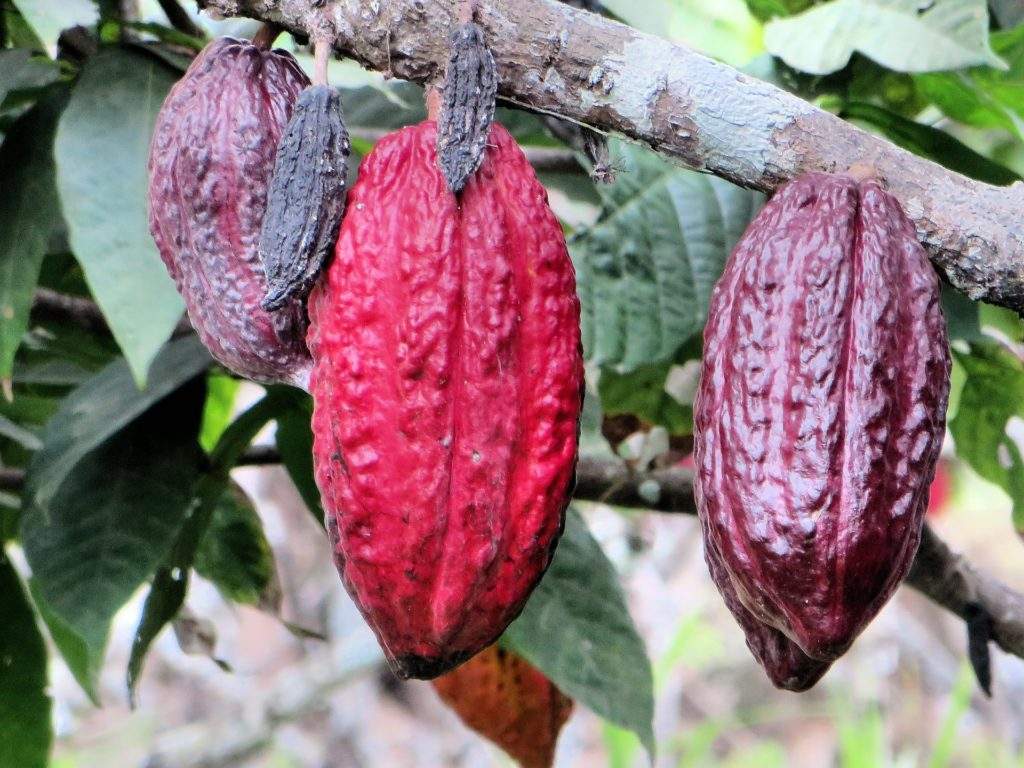
Technically, it is not the cocoa beans that are fermented, but the cocoa mucilage.
Bacteria, yeasts and enzymes ferment the juicy white pulp, breaking it down, raising the temperature and setting the whole process in motion.
The cocoa beans are just sitting there withstanding the heat and all the side effects.
If it were not for the mucilage, fermentation would not start.
There are some rare varieties of cocoa that do not need fermentation, but are simply washed (washed cocoa), but they are the exception, not the rule.
However, to see such a valuable, tasty and nutritious product go to waste is a real shame.
Fortunately, the cocoa-producing countries of Central and South America have taught us how to take advantage of this precious pulp, turning a waste product into a true delicacy.
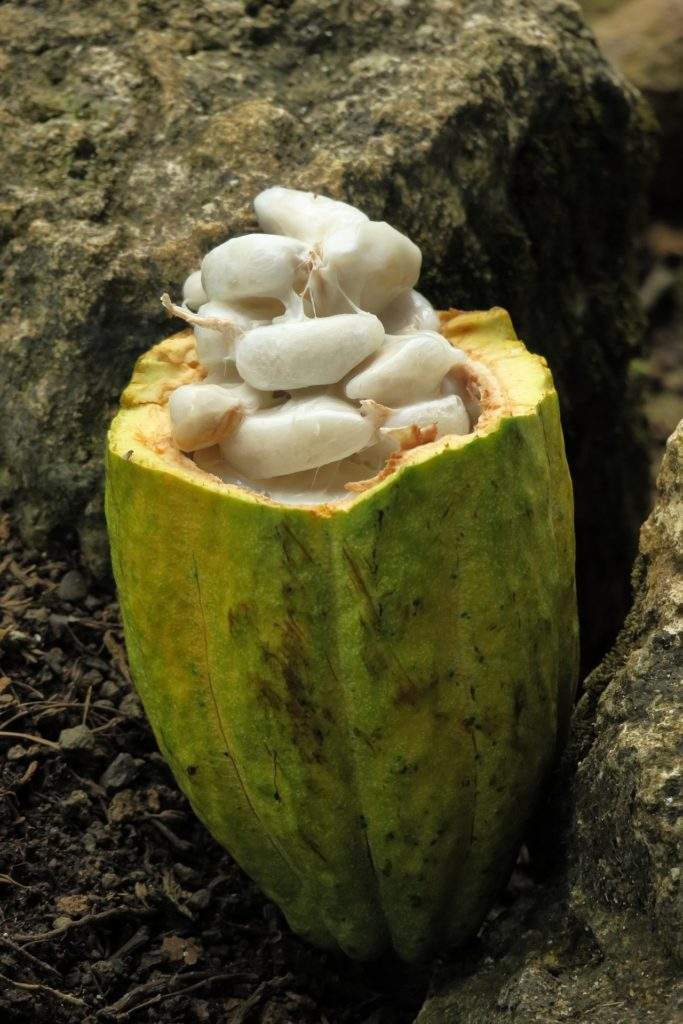
In countries such as Mexico, Ecuador, Venezuela and Peru, cocoa mucilage is traditionally used in the production of beverages and homemade foods: juices, liqueurs, cocktails, but also ice cream, jams, confectionery and pastries.
The cocoa growers and their immediate communities knew how to value the precious pulp before anyone else, making it part of their cuisine like any other fruit.
Looking up and taking a cue from this ancient Latin tradition, even chocolate consuming countries have found ways to use cocoa mucilage outside of the fermentation process.
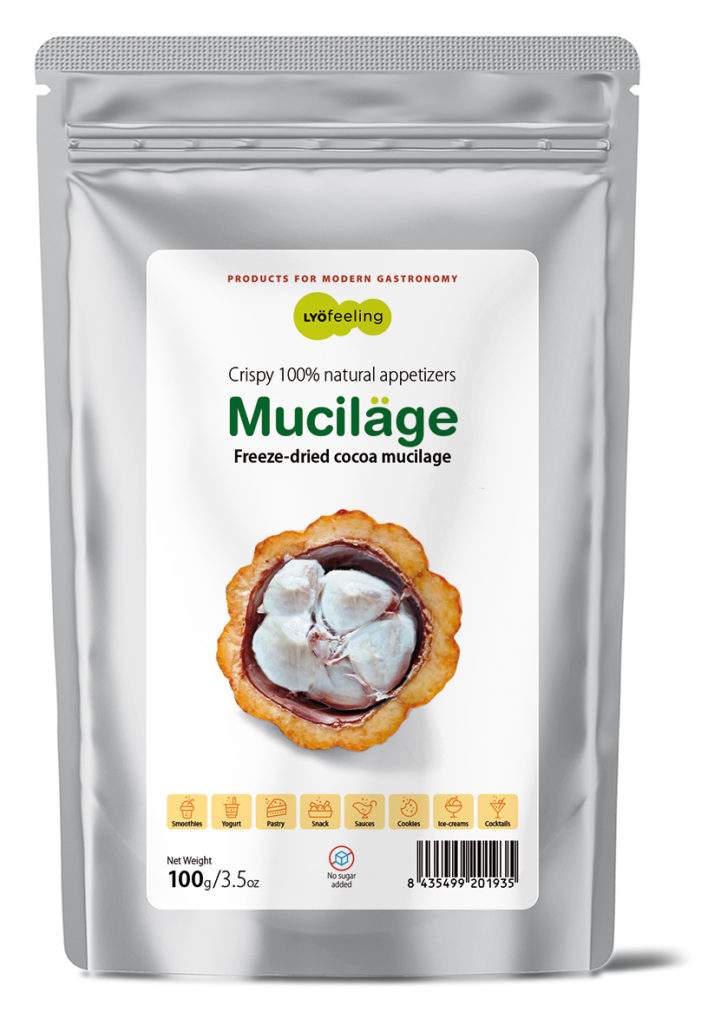
In an attempt to take advantage of the 75% of cocoa mucilage that is usually discarded during chocolate production, many companies have launched cocoa juices on the market in recent years.
Made from single-origin cocoa mucilage, with a natural fruity flavor and no added sugars, these juices have delighted many chocolate lovers.
The cocoa mucilage for these juices is always pasteurized, as cocoa pulp spoils quickly due to its high water content.
But juicing is just one of the latest popular applications of cocoa pulp.
Cocoa mucilageis now added as a natural sweetener to chocolate bars and coatings.
It is also converted into powder and sold freeze-dried in its most natural form.
The fact that cocoa mucilage becomes a commercially valuable product means that cocoa farmers can count on an extra source of income.
It is also interesting to note that some cocoa varieties produce more cocoa mucilage than others (the “juiciest” cocoa pods seem to grow in Brazil, Ecuador and the Philippines).
From now on we will see more cocoa mucilage on the market, in different forms and for different purposes, sometimes associated with chocolate, but often on its own as a fruity, sweet and nutritious ingredient.
In any case, prepare your palate for a new taste!

TÖUFOOD is a complete line of products of exceptional quality, developed by GASTROCULTURA MEDITERRÁNEA SL, which allows the most well-known techniques of modern cuisine to be put into practice. Innovative recipes can be easily realised, bringing excitement and surprise to dishes, offering a stimulating and memorable culinary experience.